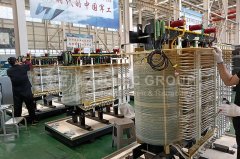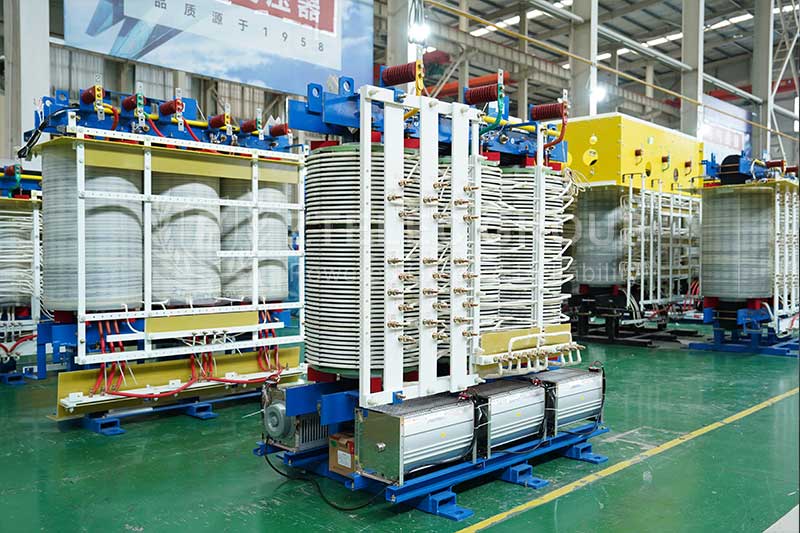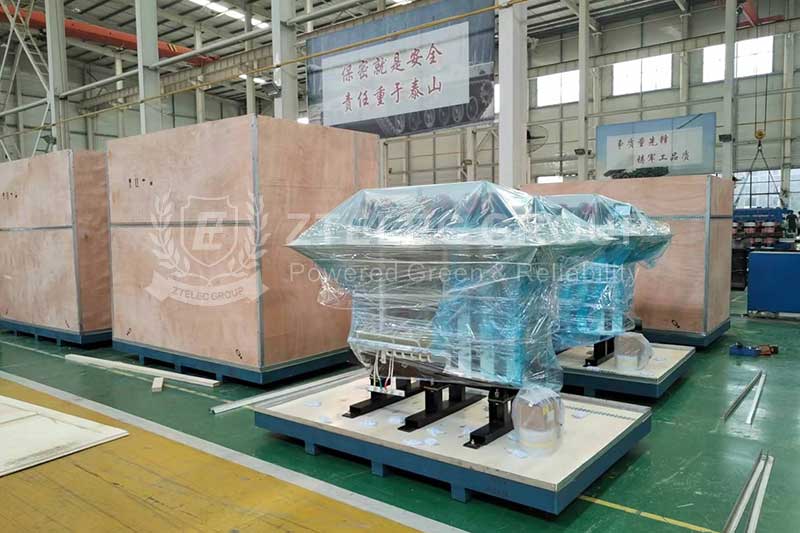FR5 vs. FR4 Epoxy Sheet: Which One Fits Your Project?
In the field of electronic engineering and industrial manufacturing, epoxy sheets are key materials, and their performance directly affects the stability and reliability of the project. FR4 and FR5 epoxy sheets are typical representatives. Although both are epoxy resin fiberglass laminates, they have significant differences in performance and application scenarios. This article will analyze in depth from the dimensions of material properties, application fields, selection criteria, etc., to help you accurately match project needs.
FR4 epoxy sheet
FR4 epoxy sheet is a laminated product made of glass fiber cloth impregnated with epoxy resin and then hot-pressed. With its balanced performance, it has become the "basic" material in the electronics industry. Its core advantages are reflected in three aspects:
· Mechanical properties: FR4 epoxy sheet has high mechanical strength and can withstand external force impact and mechanical load in daily use. It provides a stable structural support for printed circuit boards (PCBs) and other electronic components. In the assembly process of ordinary electronic equipment, FR4 epoxy sheet can effectively resist vibration and collision caused by installation, transportation and other links.
· Electrical performance: FR4 epoxy sheet has a stable dielectric constant and low dielectric loss, which can effectively isolate current, avoid leakage and short circuit risks, and ensure the safe operation of electronic equipment. Whether it is a single-sided board or a multi-layer PCB, the insulation performance of FR4 can meet the electrical isolation requirements of conventional circuits.
· Heat resistance: FR4 epoxy sheet can maintain stable performance within a certain temperature range and is suitable for most normal temperature working environments. Although its heat resistance level is not as good as FR5, it can fully meet the use requirements in the fields of office equipment, consumer electronics, etc.
Based on the above characteristics, FR4 epoxy sheet is widely used in the electronic and electrical fields. In the electronics industry, it is the mainstream substrate for PCB manufacturing, supporting the construction of simple circuits to complex systems; in electrical equipment, it is often processed into insulating partitions, insulating pads and other components, playing a key role in isolation and protection; in addition, in mechanical structures, it can also be used as a fixing and supporting part.
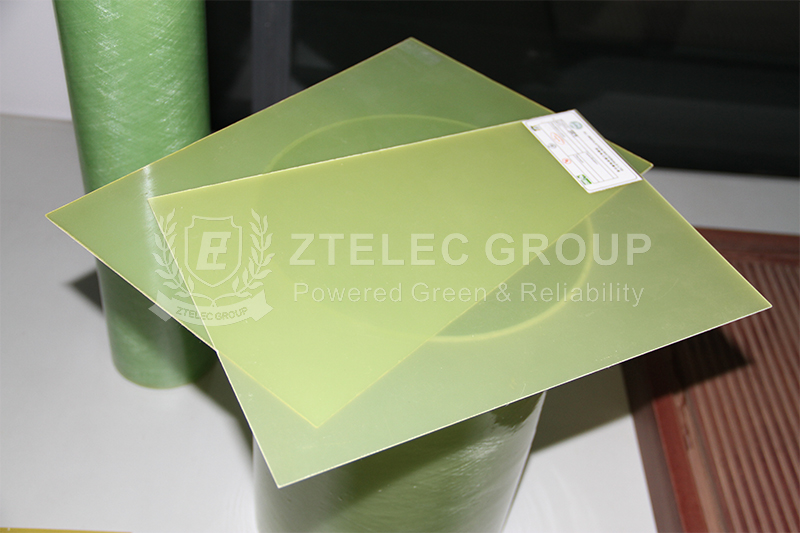
FR5 epoxy sheet
FR5 epoxy sheet also uses glass fiber cloth and epoxy resin as raw materials, but through formula optimization and process upgrades, it has achieved performance breakthroughs, especially in heat resistance and mechanical properties:
· Heat resistance: FR5 epoxy sheet has a higher heat resistance level. It can work stably for a long time in high temperature environment, and is not prone to deformation, performance degradation and other problems. In the aerospace field, aircraft need to withstand extreme temperature differences. The high heat resistance of FR5 ensures that electronic systems can still operate reliably in high temperature environments; in high-temperature industrial equipment, it can also effectively avoid material failure caused by excessive temperature.
· Mechanical properties: The tensile strength and bending strength of FR5 epoxy sheet are better than FR4. And it can withstand greater external forces and harsh working conditions. For example, in mechanical equipment with frequent vibration, parts made of FR5 can maintain structural integrity and reduce the risk of damage caused by mechanical stress.
· Electrical performance: In complex electrical environments such as high voltage and high frequency, FR5's insulation performance is still excellent, which can meet the stringent requirements of high-end electronic equipment for signal transmission stability and insulation reliability.
Therefore, FR5 epoxy sheets are often used in high-end electronic equipment, precision instruments and special industrial equipment. In the aerospace field, it provides stability for aircraft electronic systems; in high-end communication equipment, it is used to make high-frequency circuit boards to ensure the accurate transmission of high-speed signals; in power electronic equipment, it can also effectively cope with the challenges brought by high voltage and high current.
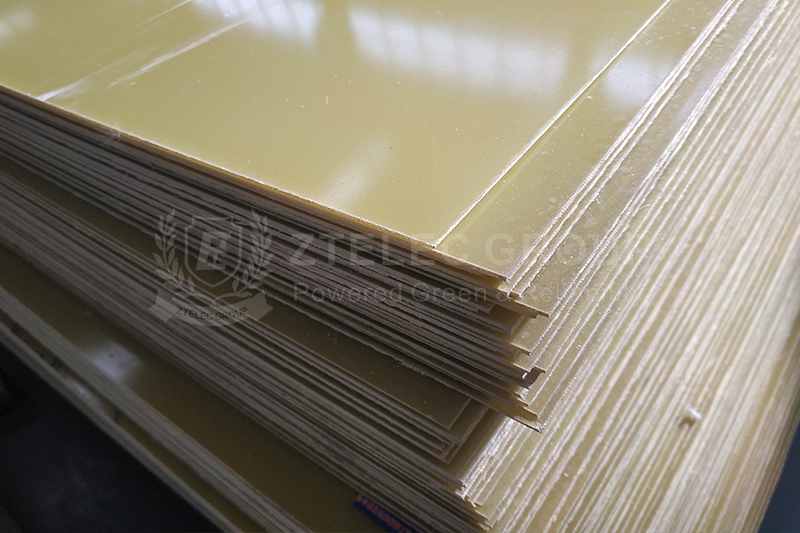
How to choose the right epoxy sheet?
When it comes to FR4 and FR5 epoxy sheets, the following key dimensions can be considered comprehensively:
Working environment temperature
Temperature is an important factor in determining the selection of epoxy sheets. If the project is in a high-temperature environment, such as around industrial furnaces and car engine compartments, the high heat resistance of FR5 is the key to ensuring the long-term stable operation of the equipment; while in an environment with normal temperature or small temperature fluctuations, FR4 is sufficient and more economical.
Mechanical load requirements
Select epoxy sheets according to the degree of mechanical load the project is subjected to. When it is necessary to make structural parts that withstand heavy pressure, impact or vibration, the high strength characteristics of FR5 can provide reliable support; for applications with smaller mechanical loads, such as ordinary electronic circuit boards, the mechanical properties of FR4 fully meet the needs.
Electrical performance requirements
Different electrical environments have different requirements for insulation performance. In high-voltage, high-frequency power electronic equipment and high-frequency communication equipment, FR5 relies on excellent electrical performance to ensure stable operation of the system; while in low-voltage, low-frequency ordinary electronic equipment, FR4's electrical insulation capacity can meet the requirements.
Cost factors
Performance advantages are often accompanied by higher costs, and the price of FR5 is usually higher than that of FR4. When selecting, it is necessary to comprehensively evaluate costs and benefits on the premise of meeting performance requirements. If FR4 can meet project requirements, choosing FR4 can effectively control costs and improve project economy.
FR4 and FR5 epoxy sheets have their own strengths, and there is no absolute distinction between good and bad. FR4 has become an ideal choice for basic applications with its high cost performance; FR5 meets the stringent requirements of extreme environments and high-end equipment with its excellent performance. In actual projects, it is necessary to comprehensively consider factors such as working environment temperature, mechanical load, electrical performance and cost, and accurately match material properties with project requirements. Only in this way can we ensure the reliable operation of equipment and promote the sustainable development of electronic engineering and industrial manufacturing.
- more+releated article
- 2025-04-23Revealing the Advantages of Dry-Type Rectifier
- 2025-04-22Phenolic paper sheet and phenolic cotton cloth
- 2025-04-22The Popularity of Dry-Type Transformers: Key R
- 2025-04-21FR5 vs. FR4 Epoxy Sheet: Which One Fits Your P
- 2025-04-21Dry-Type vs. Oil-Immersed Transformers: A Comp
- 2025-04-19Losses in Oil-Immersed Power Transformers: Mec
- 2025-04-19Why Choose FR5 Epoxy Sheet for High-Temperatur
- 2025-04-18Key points of oil-immersed transformer mainten
- 2025-04-18Lebanese Customers visit Zhongtian Electrical
- 2025-04-18The Features and Diverse Applications of FR5 E

